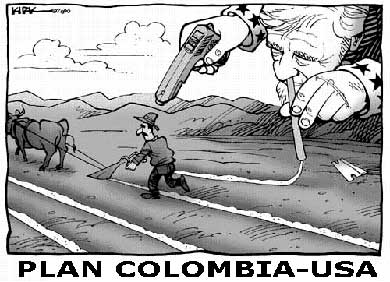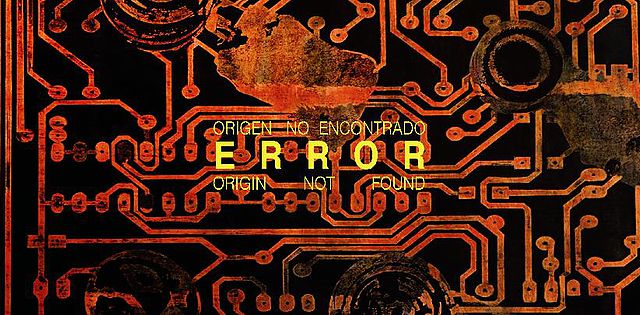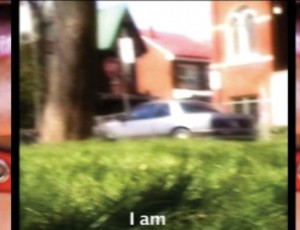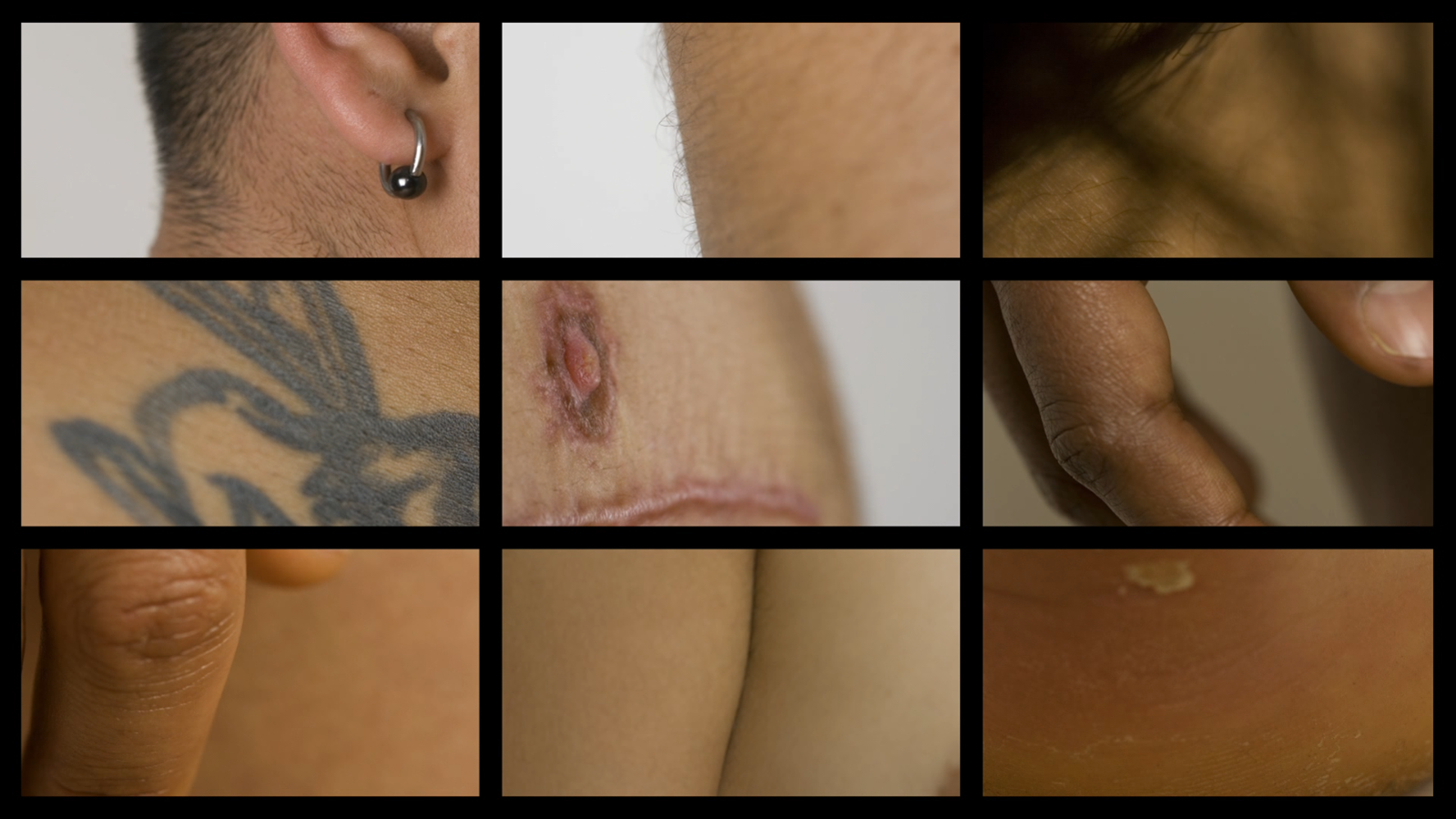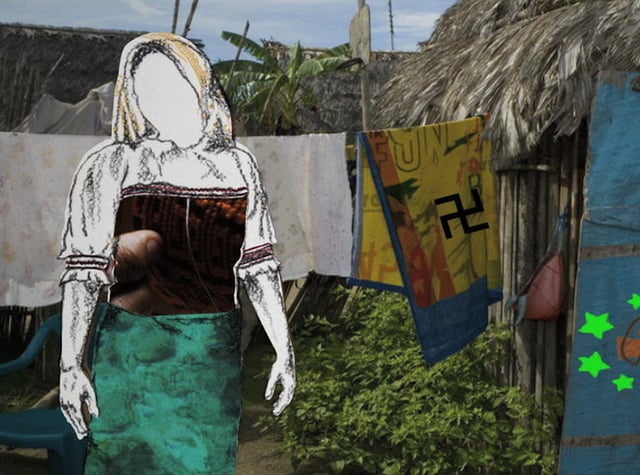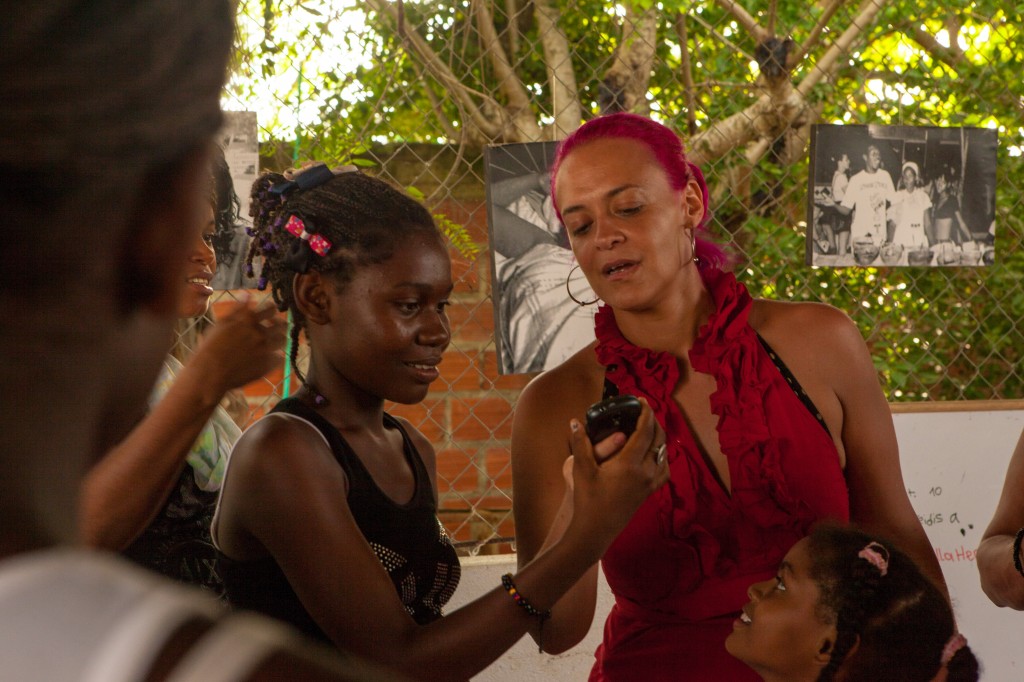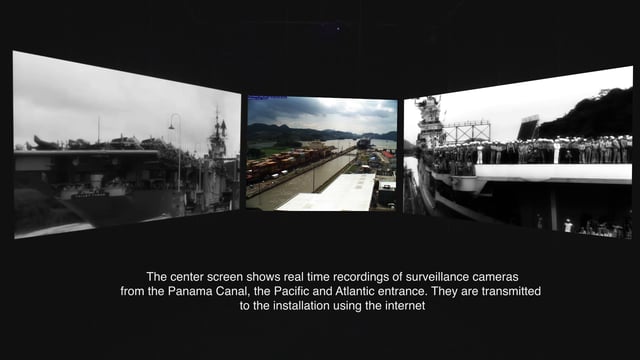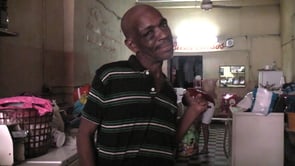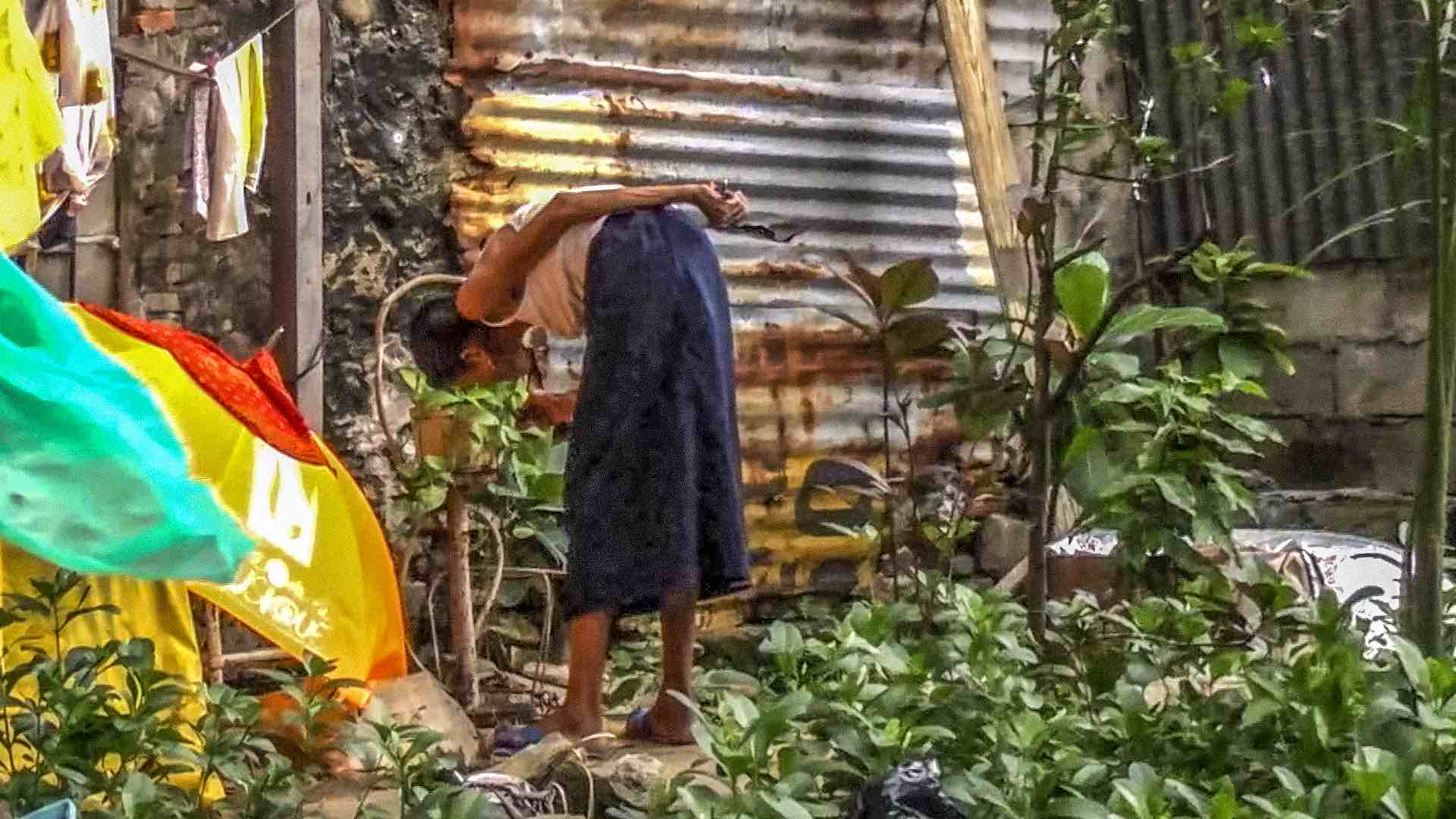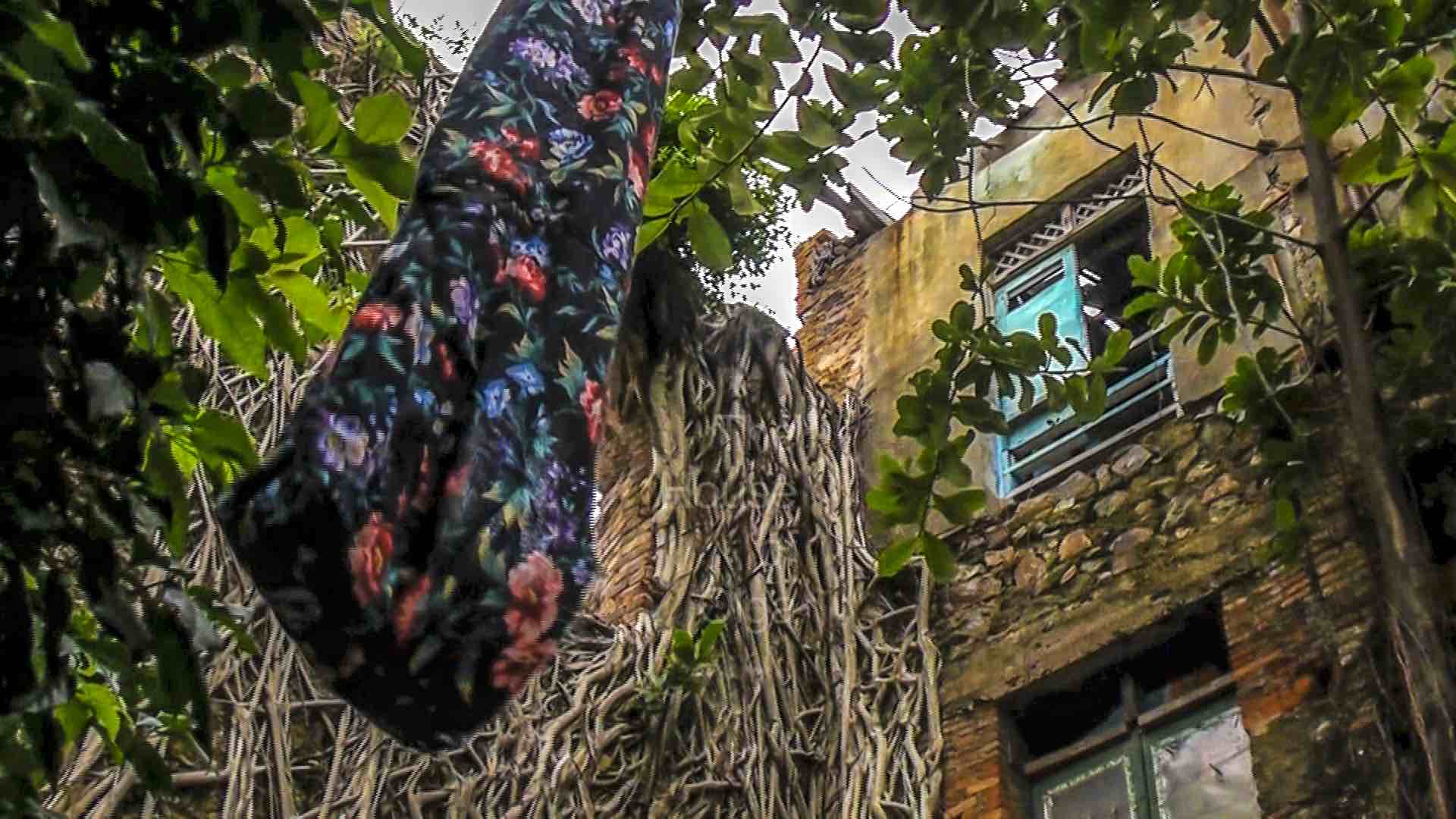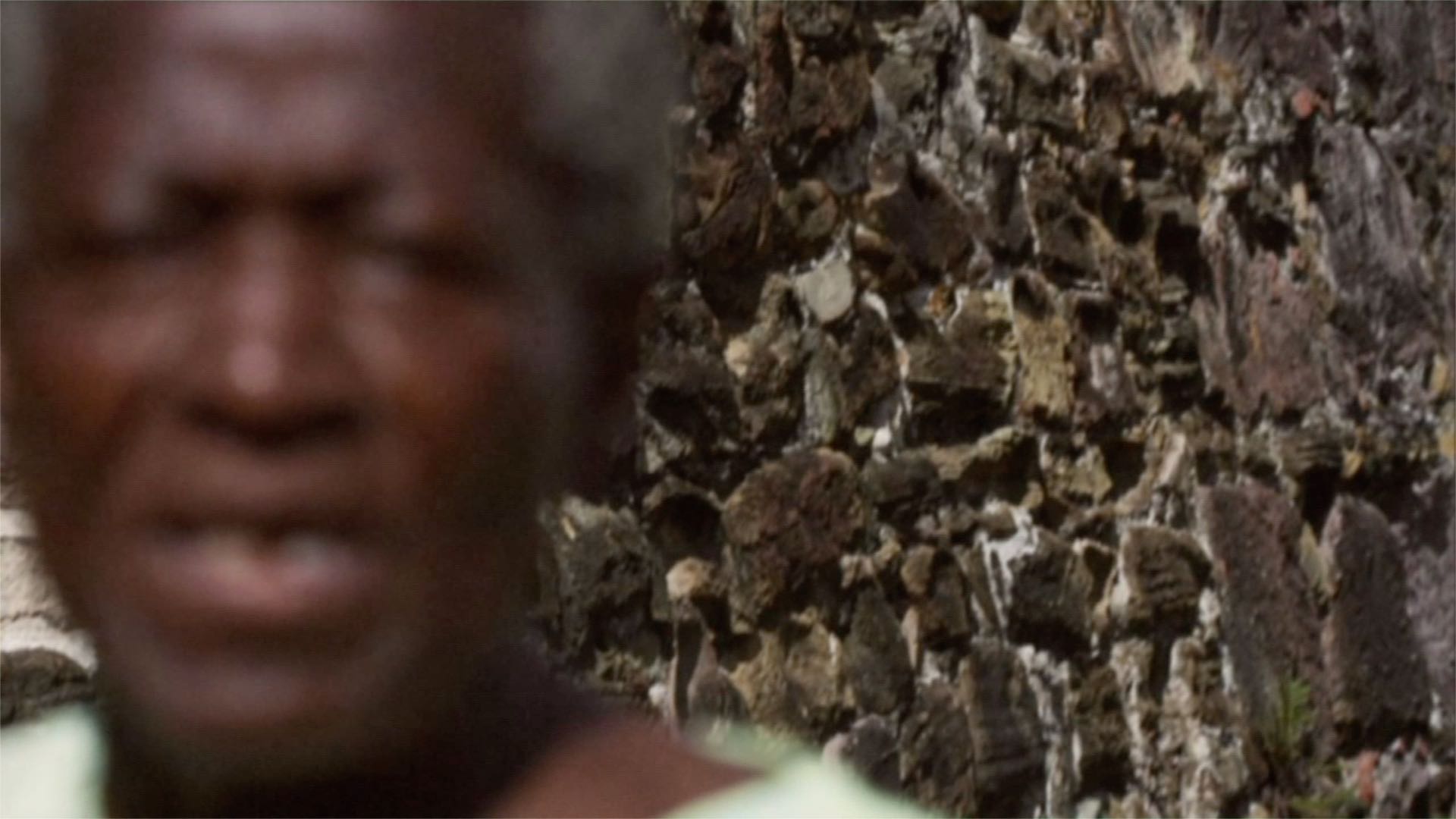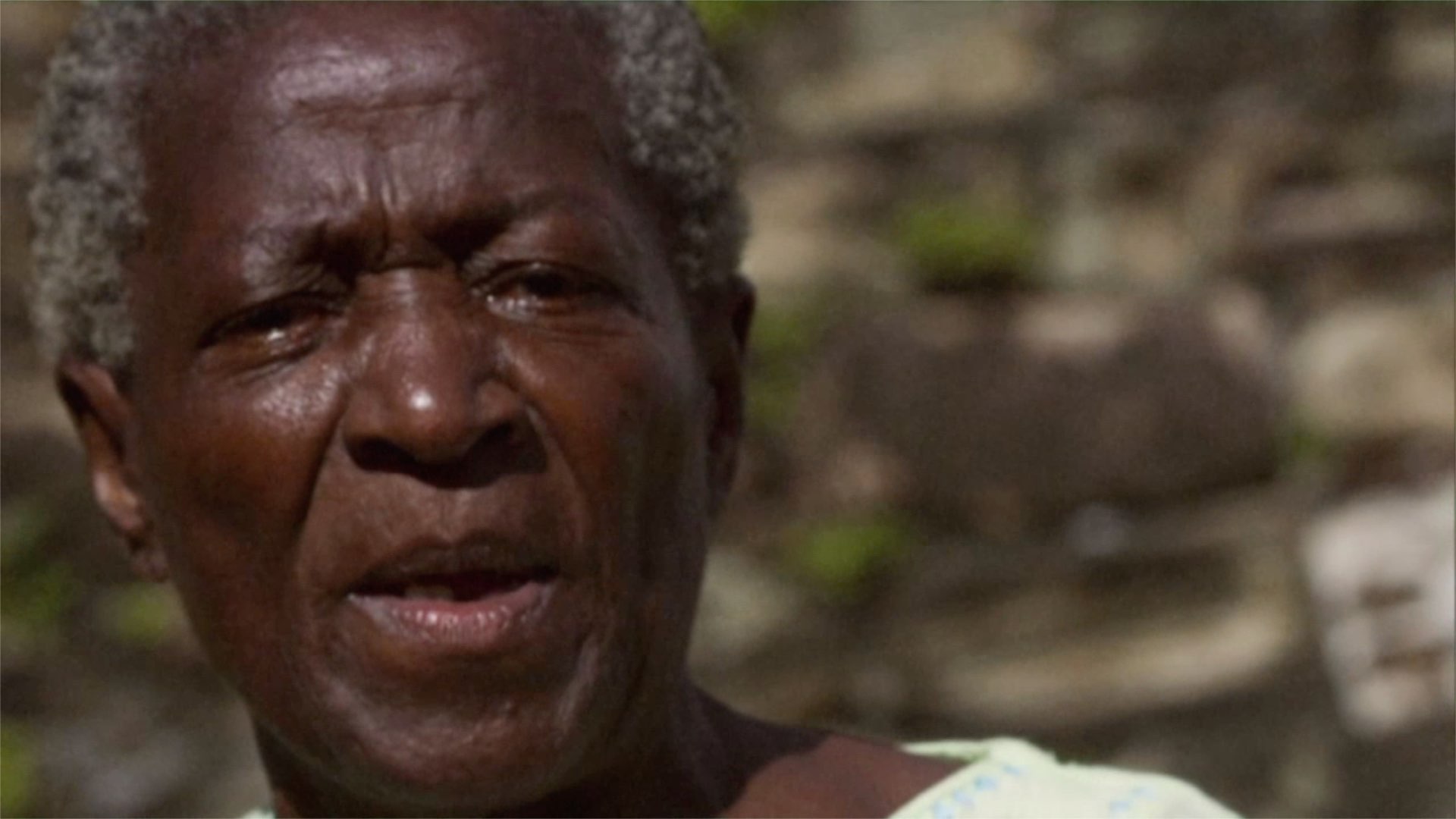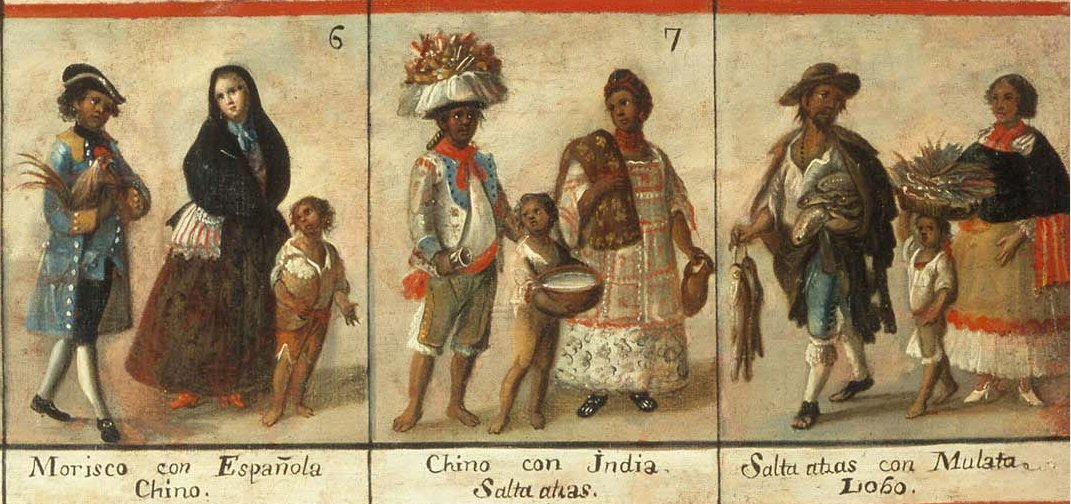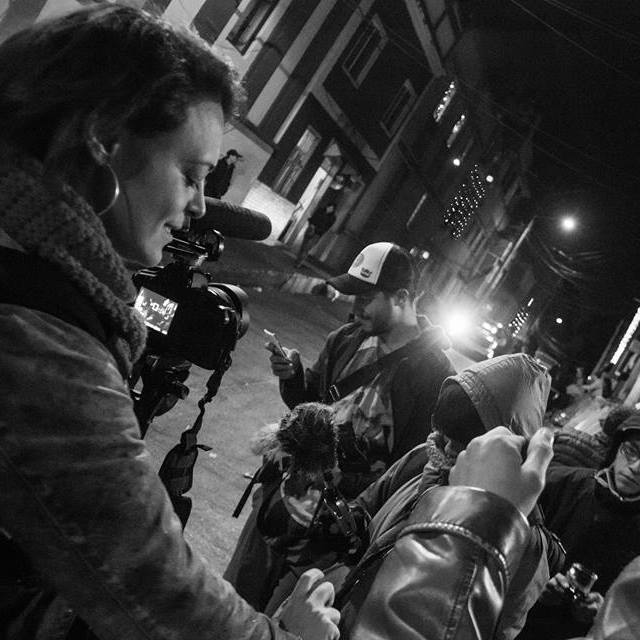
Reading Invisible Forces: an interview with Alexandra Gelis (January 2016)
Alexandra: I was born in 1975 in Caracas, Venezuela. My father is Venezuelan, his family came from Catalonia and Cuba. My mother is Colombian, from Cartagena, a modern port city on Colombia’s Caribbean coast. My mother’s father, my grandfather, was a famous sculptor who travelled to different countries making huge monuments. During Venezuela’s oil boom in the 70s, he moved his family there to make art. I was conceived in a black and white darkroom lab. After that I had no more options, I had to be a photographer. (laughs)
My parents loved photography, it was common to have labs at home, in the bathroom. They also shot a lot of super 8 that I’m trying to recover. The first film memory I have is a super 8 screening in our living room that showed the wedding of my parents at the sacred mountain of Sorte, also called María Lionza’s mountain. María Lionza is a mixed Indian and white “unofficial Catholic saint” with a great following in Venezuela and South America, she is also mother nature, and is called “Queen of the three powers”. The other two figures in this trinity are Guaicaipuro, an Indian chief murdered by the Spanish colonialists, and Negro Felipe, a black slave who was also murdered by them. These three saints are the leading figures of the pantheon and lead several “courts” of lesser deities visible in my grandmother’s altar at home. My parents had already exchanged vows at a civil ceremony but my grandmother was into spiritism (a mix of black, white and Indian traditions), so they made a new ceremony in this sacred mountain.
We have super 8 footage of holidays, on the beach, and of the factory of my other grandfather who ran a plastics business that manufactured small toy soldiers and cars. I come from a family of artists, either they’re visual artists or they worked in radio. My grandfather was one of the founders of the art school in Cartagena (where I’m really from), I used to go there as a kid and paint in all the studios. I was always encouraged to draw and paint.
Mike: Did you imagine you might be an artist when you were older?
Alexandra: I was scared to be an artist because I come from a family of well-known artists. It was a trauma for me. (laughs) I was more into photography. I’ve had a camera since I was three years old. I always had a camera. My first photos are amazing, because I was so little and everyone looked huge.
We moved from Caracas to Puerto Rico because my grandfather was invited to do architectural restorations in the old churches of the colonial section, which are very similar to the ones in Cartagena. I’m always moving. This is something that is part of my life, work, research, movies, encounters. My parents separated when I was five, my father moved to Venezuela and I moved to Cartagena (Colombia) with my mother. When I was eight I started flying between the two countries by myself. Perhaps it’s no wonder that today I’m researching migrating plants…
I went to high school in Cartagena and later on in Bogota, the capital of Colombia. The school was split between lawyers and art, so I went back into the darkroom at thirteen years old. I had outstanding professors in that school (Abdu Eljaiek and his son Esteban). Then I did a Bachelor in Visual Arts in the Jorge Tadeo Lozano University in Bogotá, Colombia. My practice was a mix of photography, sculpture and installation (I could say very similar what I am doing nowadays, using multiple sound channels and visual layers). In Venezuela there was more money, so we had darkrooms and super 8 cameras and film. I have no memories of super 8 in Colombia, and the darkroom I used belonged to the school. The only motion picture film labs in South America were in Venezuela and Argentina. It was not that common to have a good camera. I was lucky because my grandfather supported my work. For a year I even had a 16mm camera that my grandfather gave us when I was in the art school, then I don’t know what happened, it disappeared.
Mike: What kinds of pictures were you making?
Alexandra: Mostly portraits of people close to me. I travel a lot, but I’m very respectful with my camera. I turn on my camera if I have a relationship with the person. I learned when to turn the camera off and on, this is something I deal with all the time.
Mike: Did you have a sense of how the act of making pictures can be related to questions of money and power?
Alexandra: I was always aware of the camera and the respect required to find a good frame. But I’m more aware of these questions in Canada. Here I’m always asked: why are you making pictures of these people? When I go to a community I usually get asked to make pictures for them. If I travel somewhere and develop a strong relationship, I always make a meaningful portrait for the family. I’ve done this since I was a kid. I give a special portrait to people who open their houses to me.
During my last two years of art school I started working for a program at the Bogotá Museum of Modern Art. We had a study group that gave workshops mainly to street people living near the museum. This was during the 90s when the guerrilla movements and paramilitary groups were very strong. We also travelled a lot to small towns doing exhibitions, showing films and giving workshops. Here is a memory. We were in a plaza on a Sunday afternoon with two hundred people. We were in five groups working with kids and elders, all painting. Either the guerrillas or the paramiitary forces used to control those little towns but we couldn’t talk about them, they were an invisible force that were always present. Their eyes were on top of us. That experience helped me to read invisible forces and navigate extreme situations. I love to go into communities that have emerged out of violence, or work with street kids and gangs. There’s a big need for these communities to talk, to have an open space to express what is happening inside.
Mike: Were you sympathetic with either the guerrillas or the paramilitary troops?
Alexandra: No, but I have had many experiences travelling through the country and meeting those people. I had direct encounters with the troops, but above all with the victims of these groups. Through my fieldwork in communities I have been able to hear the experiences of victims. I have encountered dozens of stories associated with pain and loss of loved ones and their land. I’m not looking for these testimonies, but they are all over the country.
For example, in my most recent research on “migrated plants” in San Basilio de Palenque I was interviewing a mat weaver, a knowledgeable person in medicinal plants and vegetation of the area. In the middle of the interview he began to tell us, that he was displaced by the violence fifteen years ago. The history of this displacement is a very unique case, because many people continued to maintain their crops in their birthplace (La Bonga), even though they live in conditions of displacement a few hours from there. Paola Camargo, an art historian who is writing about this work, called this “the uprooting root,” the roots of the crops are cared for and remain in the same place, although the life of the community is developed elsewhere. There are thousands of stories like this in Colombia. After Syria, we have the largest population of internally displaced people. So when you meet a victim, at the same time you are about to witness the action of armed groups in their lives.
I have problems because I don’t look completely Colombian (whatever that means), and I’ve had pink hair for more than twenty years now. They always ask if I’m German because I’m tall and have light skin. If you’re German you must have money and that makes you a target. Kidnapping used to be very common. So I have to say no, I’m from Cartagena. I don’t have much of a Cartagenian accent because I worked with my mom doing radio. I am a friendly person and in scary situations like the one mentioned above I feel my smile saved my life.
Mike: You said earlier that you felt comfortable being in places that had known violence. Why do you feel at home there?
Alexandra: This is something I ask myself a lot. I’m coming from a special moment in Colombian history because during the nineties the country was gripped by the narcotraffic wars. It was a war between the drug cartels and the United States who were looking for a way into South America. The US remapped the country militarily and used the excuse that they were trying to control the drug market. This was called Plan Colombia. But the reality was that they were killing anti-government opposition members, bombing guerrilla armies, fumigating our jungles with glyphosate and burning down farms they suspected of growing marijuana or coca. They supported the paramilitary who went to small towns to massacre people, “cleaning” a countryside rich in natural resources so that multinational companies could come and exploit our mining resources. In return the drug cartel declared the war on the government, bombing police stations, hotels, markets, planes, buses, etc. Millions became internally displaced and thousand more were “disappeared” mostly working class people, the Afro-Colombian population, First Nations, human right activists, journalists, you name it! Madness run amok.
Mike: Were the guerrillas a left wing opposition?
Alexandra: At the beginning they were left, but by this point their aims were about power and money. Both government officials and guerrillas were involved in the drugs trade. It is a very complex situation to properly explain here. The US army and multinational companies were also involved. There is a similar situation happening now in Mexico. Plan Colombia was an important test case for the US in how to control and exploit resources.
Mike: Were American troops directly involved?
Alexandra: There has always been US military involvement in Colombia. You often saw troops. I remember one military base close to Cali that caused a great scandal. Using the excuse of creating a school for poor kids they built a military base instead. That was the area where I had one of my worst encounters with armed men.
I was in Juanchaco with my friend Adriana, travelling with my camera, taking photographs. The tides in the Pacific rise twice a day, in an area that stretches nearly two kilometers, and we lost track of time and became trapped on the jungle side of the beach. The only way back was through the jungle because the beach was under water. When we walked into the dense forest we were met by four men in military uniforms with no markings. After looking at us they told me: “Oh, you’re German and have a camera. Are you a journalist?” Journalists could send messages out of the country so were routinely kidnapped. They could have been guerrillas. I said “No, I’m from here,” smiling and smiling. They said: “Why are you walking here, you’re crazy, this is a dangerous area.” We had no boots because we were just spending a day at the beach. In the end they gave us their boots, and after a very long conversation they lead our way out of the jungle.
Murder and kidnapping was so common at that time. Why was I drawn to those situations? During the nineties I was in Bogotá when many drug lords were charged and extradited to the US. It was common to find out that someone from the DEA (Drug Enforcement Administration) had married a Colombian in order to find out where the drug dealers were. Double agents were everywhere. The drug cartels fought back and were also fighting each other. The Columbian coke mafia declared war on the US by bombing police stations, government buildings, and their own enemies, all in the main cities in Colombia. They were multi-billionaires with armies at their disposal, they had everything. They would pay a million pesos to kill a policeman in their war against the state. The nineties was a moment of bombs, I have lots of memories of leaving school and having a bomb exploding behind me.
Mike: Did you see the pictures you were making in relation to these political struggles?
Alexandra: We were a population that was born into war, even if you were against violence, the violence was always there. My portraits were about people and friends and communities that were learning how to talk again, how to live again.
In 2012 Jorge Lozano and I went together to Rincon Del Mar, a small town controlled by the paramilitary for many years. When I used to travel in that area all their stories were about magical encounters, the power of devils and ghosts, fantastic tales of animals and plants. Now that we’ve come back everything has changed, people are speaking about their traumatic experiences because they have a need to talk about it. They want to understand what happened. We were approached by a woman who wanted us to record her denunciation of her two brothers’ assassination by the paramilitary. It was an unplanned situation, and her courageous narrative became the basis for our video D-enuntiation (18 minutes 2014).
I started making video when I was at the art school in Bogotá. My first videos were shot on super VHS and edited with two VHS decks. I made three short pieces in the school including a video of the first pride parade in Colombia in 1996. I knew many people in the march. It was a small gathering in the main streets in Bogota, controlled by a lot of police. My studio was in the red area, the dangerous zone of downtown Bogotá. I shared a studio with two of my school friends in a neighbourhood filled with prostitutes, trans people and “drag-queens” who were into prostitution. We all met there.
Mike: Did that world feel different than the world of the art college?
Alexandra: No, we belonged to both worlds. I met a lot of those communities through the workshops and my studio was downtown, it was all close to my life.
Mike: Workshops have been an ongoing thread in your work as an artist, you’ve done them for a long time.
Alexandra: Yes, I’m good with tools, materials and technology. I see the need for those communities to send a message out and speak up. I used to give workshops that were more installation-based. We made many interventions in the parks with photographs, small sculptures made of found materials in the trees, and sound.
When I finished art school I was twenty years old and decided to move to Venezuela. I was working with installation and photography but the only thing I took was my camera. I did many workshops in museums but I didn’t like Venezuela. I can’t say it was an empty place, but I had come from a very intense political moment in Colombia, and it was difficult for me to connect with people so I created a second world in the web. I married a musician and computer programmer and we ran a web design company. After my camera was stolen, I just made work online, even taking photographs of virtual post-punk worlds. We created a community between Spain, Venezuela and Argentina, hacking things together and teaching each other how to create the web.
In 1999 Hugo Chávez came into power in Venezuela and for a year I was hired to take official photos of him and his campaign. Venezuela was a country where no one talked about politics. But from then on, politics became the main point of every conversation. Before Chávez Venezuela had too much money, and it all came from oil. The money stayed with the oligarchs, the top families. The country had an unreal economy, because apart from oil, they didn’t produce anything. And the exchange rate was artificially high, one American dollar was the equivalent of two bolívars. When Chávez was elected he changed all that, though the big families didn’t like it, and the conflict started. I was in Venezuela during the first five years of Chávez, before the second elections. I worked on art/social programs for elders and kids. When the second campaign began he destroyed all those programs because he needed money.
What an intensive life Chávez had! He worked all the time and never slept. It was the best moment of the country, when the majority had a voice. Later everything changed, and the hate movement began, the main families were against him as well as the Americans and that mattered a lot. When workers at the big oil company PDVSA went on strike, the US parked a ship near their offices and deleted all of the company’s computer systems. Oil production stopped for a month. Chavez invited open source programmers from around the world who came and reprogrammed everything. Open source computers became very important for the country, the country really supported this movement after that.
One day in 2005 I was watching music videos on TV and they ran a commercial for a video art workshop by a Colombian (Jorge Lozano!). I hadn’t made a video in so long and felt trapped in this weird country so wanted to go. At the next aluCine Fest (dedicated to Latino-Canadian media artists) a video of mine was selected. I came to Toronto for the first time in May 2006 and never went back.
I fell in love with the bikes in Toronto and the feeling of security. I came from Venezuela where there are so many gangs and arms. Simón Bolívar used to say: Venezuela is my army and Colombia is my university. It’s exactly like that. I was coming from Chavez, and social troubles and gangs but here I can walk through the streets until three in the morning and nobody’s going to touch my bum or yell at me. It feels safe. I was able to breathe. Coming here gave me the space to go back to my art, to memories and experiences I had in my life, to open my backpack and see what was there.
I used to travel a lot at a really young age through hard places with a camera. Today I’m doing the same thing with more cameras and a computer. My photographs were often made in sequences, and this had figured in my earliest video work. Now I needed to make more videos again.
Mike: Can you tell me about English for Beginners (2.5 minutes 2009)?
Alexandra: This was the first tape I made in Canada. I had studied French, but the French that people speak here is different. So I thought OK, I need to learn English. The tape offers some of the earliest moments in a language lesson. Where are you from? When you’re learning a new language your voice changes. The voice is also created as part of the learning, it’s affected and transformed.
Mike: Frederic Jameson named language a prison house, and in the bits you recount here, you point out the way that this new language of English is filled with hidden borders and territories that mark its speakers.
Alexandra: Gender and action are being named. “I am, you are, he is, she is.” In Spanish we differentiate between being and doing. The tape is a self portrait about learning a new language and discovering the land. The frame is divided into three parts, like the Canadian flag.
Mike: Can you talk about your beautiful short movie Borders (3 minutes 2009)?
Alexandra: I moved into “womansion,” a wonderful house of powerful queer women. I was lucky to spend the first years of my life in Canada living in this house. All of us were into art and activism, performance and music. The queer movement. This entry point allowed me to understand the power of women here. I was coming from a different perspective of what it meant to be a woman. Many see the macho presence in South America as the one always in control, but the reality is that women can also take control, but we fight in a different ways with very unusual and creative strategies.
The group of women I lived with were fighting from performance, from video, from a music perspective. Many were attending the Ontario College of Art and Design. My movie is a portrait of six of them who self-recognize as women. I invited them to my room with white walls to take photographs of their skin borders. I felt we were living in the borders between genders, we don’t want to be enclosed on one side or the other. I made more than five hundred photographs for each of them, the entire video is made out of these pictures. The photographs show the edges of their bodies and the marks they have, their tattoos and scars from accidents and operations. At the same time I was having a conversation with them — what does it mean to be a woman here? I asked them to talk about their life through their body, and from the marks they revealed.
Borders shows a grid of these powerful women, mixing bodies and stories. The sound in the video comes from the spaces in our conversation. The moment when you are connected directly to the unconscious, when the unconscious speaks. So for example: ah, em, uh, hmm… this is the sound of Borders. In the single-screen version you see just the grid, and the sound between the words. In the installation version, I have six audio players carrying the stories of the individuals.
Mike: Have one of the six subjects gender transitioned since you photographed them?
Alexandra: Oh yes, two of them have transitioned, including my dearest friend and sister/brother Joce Tremblay. The twins Joce and Natalyn Tremblay were my family, I used to go to their family farm. I can say that spending time with their family was a truly Canadian experience.
Mike: Can you tell me about One Dollar Click (2 minutes 2010)?
Alexandra: One Dollar Click is an island story. There are 365 islands between Panama and Colombia, completely controlled by the indigenous Kuna community. They began a revolution to take back their land and won. I’ve travelled there many times and started taking photographs after I was invited. The movie is called “One Dollar Click” because they usually ask tourists for one dollar per photograph. You can take my photo but then you have to give me one dollar.
The video is made almost entirely out of photographs. The first shot shows a small airport, and then the camera goes into the boat to the island. My feet walk on the sand, there are drawings and banners, and the flag of the Kunas, and then we meet the little boy with a gun in his hand who says “One dollar! One dollar!” The video questions our presence in this indigenous stronghold. We arrive full of devices, with our computers and sound recorders and cameras. I am shown as a digital animation, a presence that walks but doesn’t have a face, and the dress displays the history of these islands. The sky of the Kuna is made out of gold, all the objects they have are kept in the sky. Everything that passes by their island is taken into their sky. They have absorbed everything while maintaining a strong identity. They’ve survived by being resourceful
Mike: Much of your current work is located in Panama.
Alexandra: When I moved to Venezuela my family moved to Panama. The Panamanian government had invited my grandfather to organize an art school. And my family was having problems in Colombia. My grandfather’s car was sabotaged and he was almost killed, if you were well known or had money you could be kidnapped. They were afraid so they moved into the Panama Canal zone, a military space that was given back to Panama on December 31, 1999. It had been the biggest American military base in the world. Panama has been a US laboratory for many things, from biological research to botanicals to military experiments.
My family moved back to Panama and saw well maintained spaces, huge houses, a beautiful land full of animals that had been well taken care of. They wondered: why don’t Panamanians live here? Years later I came to Panama after receiving an invitation from the United Nations to give a video workshop about environmental protection. The UN expected the workshops to produce a series of videos about the land, water usage and scarcities, but instead all the videos were about political and social issues. This is what the youth were thinking about, this is the need they had, and I wasn’t going to censor them. The UN said it was OK, they were open to continuing. Through this work I became connected to the people in Panama. In 1989 the US invaded and many military weapons came into the hands of gangs in the country. Panama City is still full of guns and groups of youth fighting each other. In the nineties there were fires across the country that destroyed many poor towns and these populations were moved into the old colonial houses in downtown Panama City. The rich owners moved to different areas of the country. In these houses it was common to find ten families living together, and downtown became increasingly dangerous. Then the rich wanted to return to their newly designated heritage zones and those families were evicted. In 2007 the local government invited me to do a workshop in this area, and many of the video portraits I’ve made are part of this neighbourhood.
Whatever work people make in the workshop belongs to them, I never include their work in mine. Together with Jorge Lozano, we’ve helped to produce many of their videos. And of course our work is influenced by these encounters. We were working near the Panama Canal, surrounded by hundreds of passing ships, but the workshop participants never spoke about them. There was also a lot of paja canalera (elephant grass), a plant that appeared to be wearing a military uniform. It was an invasive species that grew everywhere, and up to five metres high. I found out that it had been planted by the US army to separate areas of the Panama Canal zone (where my family was now living) from the Panamanians, as a living barrier. You cannot cross the plants because you can be hurt, they cut you. The plant is native to Vietnam, and was introduced during the time of the Vietnam War in order to train American troops. One of the biggest problems they had in Vietnam was how to cross these plants. Today the plant is everywhere.
I started shooting in the School of the Americas, the military school where all the dictators of South America were trained by the US. Many military experiments were conducted there. After years of protests the school was relocated to the US. I went into the school and made one of my largest projects called Corridor: The Big Picture (60 minutes, 2013).
For years I travelled through Panama, through military bases, recording the presence of paja canalera. I searched for archives but all of Panama’s archives had been destroyed so I started making my own. I made recordings of the social tide, the marches, and the environmental movement. Corridor is an archive of how people resist that plant and resist power. At the last moment I found an American promotional film made in 35mm urging people to come to the School of the Americas. It said: you should be proud of being a soldier fighting for the freedom of the world. The last version is a mix of those images plus the documentary. It runs for one hour on two screens, and in the middle is a real time projection of the Panama Canal, showing ships crossing.
Mike: Tell me about San Rafael (4 minutes 2010)?
Alexandra: I stayed downtown for a month doing workshops in Panama City, always travelling with my camera. The whole neighbourhood knew me. One day I was doing laundry when Rafael started talking to me. “So do you have your camera?” he asked and began a cryptic and enigmatic performance. The video is just one shot of San Rafael who is sporting a black eye from a fight. After talking to him I realized that was trying to pick up young men on the street and one of them gave him a black eye. He talks about Roberto Duran, the champion boxer who came from that neighbourhood, and how he punched harder than him, though he says it in a very ironic and queer way that undercuts any macho routines. Most of people who live in the streets have stories with double (or more) meanings. It is interesting to see their capacity to create something out of little.
Mike: Can you talk about Olga, the woman who you meet outside in The House of Olga (12 minutes 2010)?
Alexandra: I love Olga. All of these people were very important during my stay in Panama, they showed me what Panama is. Olga used to sell little chocolate soccer balls on the street. She wore beautiful flowered dresses and came every day to spend time with us. We always have food for the participants, so many lovely people from the neighbourhood came around to ask: what are you doing? Can we help you? And to have some of the food as well. Olga arrived very elegantly, selling her little balls. She always asked: “Alex, when are you coming to my house?” I told her: “Olga, I want to come, but we’re really busy here, we’re producing ten videos a week.” “Alex, come, I really want to show you my house.”
One afternoon we were shooting a video of one of the workshop participants at the old monastery where many families lived until recently. We filmed the plants and the roots that have grown inside the walls of the building. A very futuristic landscape after the demise of human beings. Then Olga came up from behind us and exclaimed, “Alexandra, are you coming to visit me?” I was so surprised. “Olga, do you live here?” We went to the back of the building and this was Olga’s “house.” She lived in what used to be the old church, she was the last one left. A space where the indoor had become an outdoor. The government had offered residents different houses and apartments but she didn’t want to leave her idyllic space. She was living in a space that used to be inside the building, before the walls and the roof were torn down. She told us: “This is my bed,” and the camera shows that her bed is a big rock on the ground. She insists: “I have everything I need. I don’t need a big apartment, I‘ve travelled all over the world. I’ve lived in Spain, I don’t need so much space. Here I have everything. I have my candles, my photographs…” She pointed to an exterior wall with a few belongings tucked into the cracks, everything out in the open. She was always taking care of the plants and flowers. She used to sell the plants. There’s a yellow umbrella where she can shelter from the rain. She said: “I need air, I can’t live inside walls.” My mom met her two years ago, and apparently she’s moved out of this place, she’s moved to a balcony. Olga told my mother: “I need air, I don’t need a house just air.”
Mike: Maria’s House (12 minutes 2010) is another portrait of a woman you met in your Panama travels.
Alexandra: Maria became like my mom. Whenever I spend so much time in a place, I get a mom. We grow with many moms in South America, elderly women adopt you when they like you. However I seem to find mothers everywhere, most recently in Ethiopia (Zuryash) where I was doing workshops. She came to me in the same way as Olga, she visited the workshop and asked: what are you doing here? How can I help you? Maria was the town activist. She was the first woman in the local government who represented the neighbourhood. She was also a professor, a teacher of many generations, very well known and respected. She taught me the history of Panama through her house. When I first went I didn’t have a video camera, everything started with photography, I made a 360 degree portrait of her house. I took photos in vertical lines, from the floor to the ceiling, and then moved the camera over and made another line. You see her hand on a sofa, and then photos of her family and her daughter, and the diploma that tells us she is a professor, and then a certificate saying she works for the government.
Torrijos was a general who ran Panama from 1968-1981. He was a nationalist general who signed the return of the Panama canal from the US army in 1999 and was then assassinated by the CIA, so they say. Maria was in the government at the same time as Torrijos, helping to support the people. To understand her house is to understand the history of Panama. She lives in front of a wall that was built to separate the slaves from the whites in power in colonial times (it was part of the Spanish empire for more than 300 years, from 1513–1821). The slaves came from Africa to work in the colonies. Most of the black communities in South America came from western Africa.
Mike: Did people in Panama have slaves?
Alexandra: The rich had slaves. Slavery was abolished in 1851. The ships that brought slaves to America stopped in Panama, and also in Cartagena in Colombia. This story is really close to me. I come from a place that has the biggest walled city in South America. Cartagena was the main port in Colombia for ships coming from Spain. Some of the slaves would be delivered to market directly from the boats. The cities were walled to protect citizens from pirates who travelled the Caribbean. But who lived inside the walls? Who were protected? The Spanish. The slaves and blacks lived outside the walls.
Maria lived just outside the wall. She says in the film “My family lived outside this wall, even though during the day they worked inside the wall for the rich.” She talks about the separation in Panama between black and white, and how even though her family helped to build the Panama Canal they weren’t able to go to church because they were slaves. Then she talks about the Panama invasion by the US in 1989, and how her mother was working in one of the main hospitals. When she describes the bombs, I used some archival footage from the invasion. She talks about Noriega, the dictator who ruled the country from 1983 to 1989.
Anyone born in the Panama Canal Zone (a large area stretching five miles on either side of the Canal that had its own courts, hospitals, police, and civil government) would be called “ZONIAN” and could be a citizen of both Panama and the United States. Panama was a US colony.
Maria’s daughter joined the American army, and after she had a baby she invited her mother to join her in Germany, where she was stationed. Maria talks about her experience there, the strange language, as we see pictures of military bases. I kept returning to film her house for many years, the house was always changing. In the last shot of the movie the house is empty and she says: “Alex, I love my house, but my daughter came last week and told me: You’re crazy, this house is full of garbage” and she took everything I had. Now it’s all empty. This is the story of the US in Panama, how she came and took everything.
Mike: A casta was a hierarchical system of race classification created by the Spanish in South and Central America during the Spanish colonial period (from the 16th to 19th centuries). Does it still operate today?
Alexandra: The casta system tried to calculate and name degrees of whiteness. For instance, if you mix black and white you get a mestizo. We are still really aware of differences of race and colour. However it is more accurate to talk about class.
Mike: Are there hierarchies of beauty and power based on skin colour?
Alexandra: Completely, even though we have very mixed populations, “white rules.” In Colombia, Venezuela and Panama there is an enormous black and indigenous population, but the general feeling remains: the whiter the better. I’m the whitest in my house, in my family. It’s considered a good thing. But I wasn’t really conscious of it. If I have a child it could be black, or it could look like a person from India. I am a mix of Spanish from my father and Indian, white, brown and black from my mother who actually has very distinctive black features.
Mike: Does whiteness make you safer?
Alexandra: Overall I live my life without feeling insecure. I trust people and that is why I just love to work with and within communities. Without doubt, skin colour generates cautions or affinities between humans. But that is only at an initial stage. No amount of whiteness can keep you safe for long or maintain systemic privileges. I usually do not work with white communities. Instead, I work within communities that have lived and suffered the presence of white people in their territories. In that case, rather than making me feel safe, the color of my skin could act against me. However, after arriving in a community, things do not depend only on your skin color, it all depends on who you are and what your work ethics are. Communities have also learned to be more cautious about associating color and identity.
Moreover, there are not only prejudices associated with the idea of race, but also gender. Being a woman creates a safer space for me. To be a woman with a smile. When I am in Panama or in other communities I become someone who may represent any of the female archetypes: the protector, mother, best friend, the wise, the bride. I’m a strong woman who works with them one by one, and gets into risky situations, but at the same time can look and be very feminine.
How do I challenge traditional masculinity? When I lead the workshops I’m always in high heels and a dress that I design myself. In the most dangerous places I appear super femme, that’s how I play with those roles.
Border Crossings: The Dream Medicine of Alexandra Gelis
Pleasure Dome show January 16, 2016
This Columbian-Venezuelan artist is concerned with borders and boundaries – of gender, of citizenship, of economic status. Her work is a song of the underclass, she brings forgotten faces and pleasures to the screen with bold digital poetry and direct cinema reworkings, offering new ways to show what has been for so long ignored or forbidden. This program offers a brace of never seen before work, fresh winds from the south, offering us a chance to encounter seven years of this prolific artist’s work.
Part One
English for Beginners 2.5 minutes 2009
The beginning, the first border crossing, the first video made after the artist’s move to Canada. Language, country, identity. It is composed in three frames, an echo of the Canadian flag. The speaking face is also divided, cut in half by the landscape that pours into the new wound of identity.
Rhizomatic Directed Simulation 6 minutes 2014
The movie opens with a quote from Borges: “The best imitation consists of the original’s destruction and the creation of a self referential text.” While a galaxy of super 8 luxuries erupt, the film hand processed, the emulsion cracked in order to reveal its silver secrets, a silhouetted camera operator attempts to contain the experience, even as he is subjected to the same chemical disintegrations.
Porn 2 minutes 2014
A remix of the previous movie (a famous American super 8 movie from the 70s, scratched up by the artist), this time narrating the body. Fleeting texts conjure a space between genders that creates poetry out of theory: ” …the materialization of the political … increasing the level of testosterone… different than a cis-female.” The quotes are drawn from Paul Preciado’s devastating theory confessional Testo Junkie: Sex, Drugs and Biopolitics in the Pharmacopornographic Era.
Bridge of the Americas 2.5 minutes 2015
Part of an ongoing series of works made in Panama. Live animations re-animate this international bridge and border. The persistent background of life in the Panama Canal Zone are these passing ships crammed with waving travellers, the most temporary of citizens, their eyes like rain.
Conchitas/Conchs (with Jorge Lozano) 6 minutes 2010
Double screen movie about composition, memory and drowning. Like so many of this artist’s movies, these pictures are gathered as part of her living, collected with her reliable camera accompaniment. Alexandra becomes the beach sand while Jorge dissolves the picture into a gummy bear colour screen, as we hear memories of drowning on the soundtrack, the casual terror lurking in the light of the everyday.
Maria’s House/La Casa de Maria 12 minutes 2010
Begun with a series of vertical photo tilts of Maria’s house, an animated scanning (let’s not leave anything out!), this house movie contains the entire history of Panama as we watch it slowly empty out. The walls just outside the front door kept the whites safe from roving pirates, and while Maria and her family cleaned their houses and cooked their meals, even helped build the Panama Canal, their colour and class ensured they would live outside protections. Maria’s hard working social conscience helped her become elected, and as she brings us out into the streets she is greeted by neighbours, their warmth a testament to a lifetime of activism and care.
Part Two
San Rafael 4 minutes 2010
Made in a single shot from a chance laundromat encounter. The black eye of desire. Rafael offers a reaction shot to his street cruising efforts, and the unwanted fight that ensued. In his extravagant speaking he names himself as an archangel, his chest open so that the wings of his words can lift every ordinary encounter into a queer sublime.
Borders/Bordes 3 minutes 2009
A masterpiece of multi-screen bodily decomposition, Borders offers a nine-screen collective portrait, made entirely out of photographs. Inviting six of her queer feminist housemates who identified as women for a suite of portrait sessions, the artist pictures the borders of skin, and by recombining them into a grid creates an always shifting composite body that floats between genders. The soundtrack is created out of the spaces between words, the beginnings of sentences, the pauses and hesitations, where the unconscious lives.
*work in progress – new movie made in Panama, 3 minutes, 2016
One Dollar Click 2 minutes 2010
The artist makes an approach to the indigenous triumph of the Kuna on the San Blas Islands, a string of 365 islands that run between Colombia and Panama. Nearly every frame has come from a still camera, as we are led across sand and water into village life. The artist appears as an animated apparition, portraits, posters and landscapes float through her. The feeling of the land, the roots of collective experience and identity. A passing banner announces: “People who lose their tradition, lose their place.”
La Casa de Olga/The House of Olga 12 minutes 2010
In the most direct frames possible the movie brings us into an intimate encounter with Olga, elegant and proud, thoughtfully articulate. How happy she is that Alexandra has come at last to see her house, which she shows off with all the grace of an estate holder. She points to the rock which was her bed for many years, and which cured her of every physical ailment. Her home used to be part of the old monastery in Panama City called Ruins of the Society of Jesus, but the walls and ceilings were blown away, she lives now in the former interior, exposed to every element, taking shelter occasionally beneath her yellow umbrella, her scant belongings placed in the cracks of a wall.
